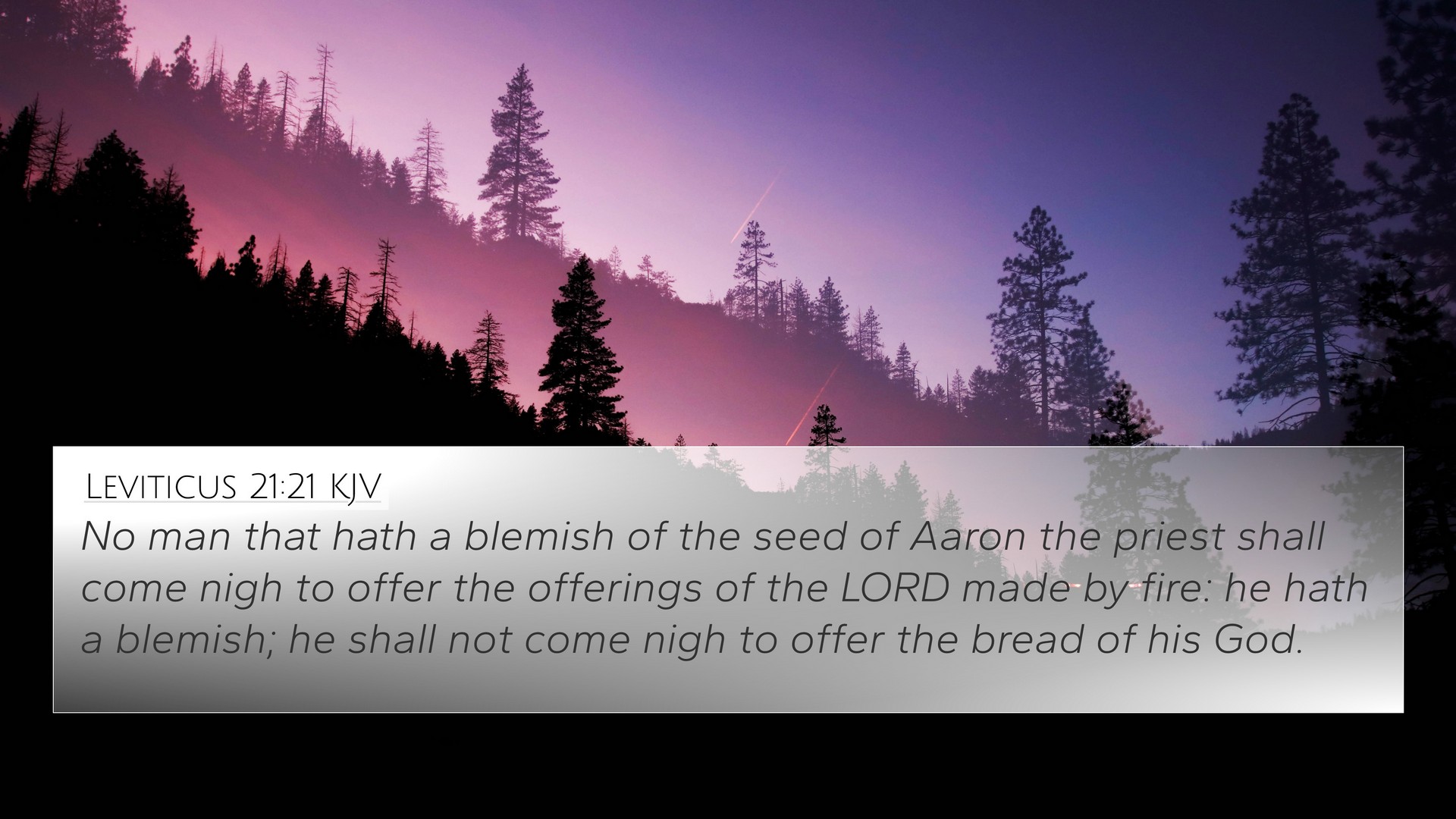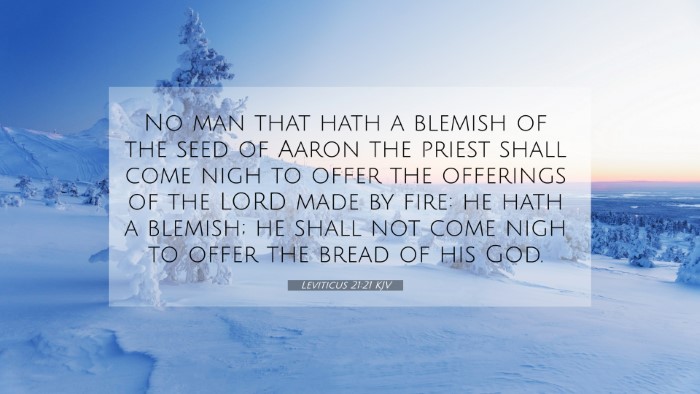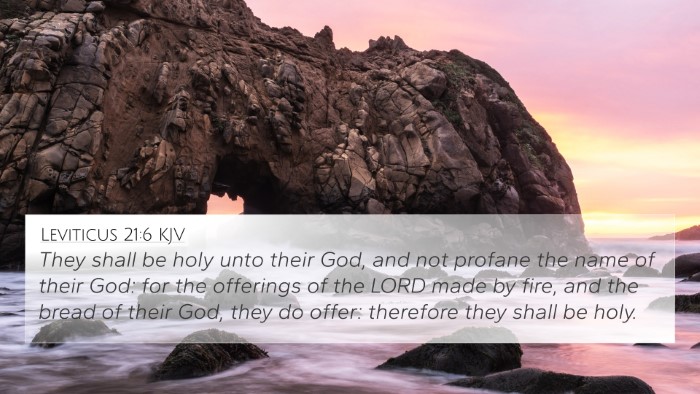Understanding Leviticus 21:21
Leviticus 21:21 states: "No man of the descendants of Aaron, the priest who has any defect, may approach to offer the offerings made by fire to the Lord. He has a defect; he shall not approach to offer the bread of his God."
This verse emphasizes the importance of purity and wholeness in those who serve as priests in the temple of God. Below, we offer insights from public domain commentaries that elucidate its meaning and implications.
Summary of Insights
- Matthew Henry's Commentary:
Matthew Henry highlights that the physical qualifications for priests serve a symbolic purpose, representing spiritual integrity. He notes that defects in a priest disqualify him from offering sacrifices, emphasizing the seriousness of holiness in presenting offerings to God.
- Albert Barnes' Notes:
Barnes explains the principle of wholeness as integral in the priesthood. He states that the priest's service to God must reflect a complete devotion and fitness, which includes physical, spiritual, and moral considerations.
- Adam Clarke's Commentary:
Clarke provides a more detailed understanding of the term 'defect,' explaining it includes various physical ailments. He suggests this was to maintain the dignity and reverence of the priestly role in God’s presence, symbolizing how God desires purity in those who represent Him.
Theological Implications
The theological implications of Leviticus 21:21 extend beyond the Levitical priesthood. They underscore a broader biblical theme regarding the need for purity and qualifications for serving in ministry roles. The notions of holiness found in this passage echo throughout biblical texts, creating connections between different scriptures.
Cross References
To better understand Leviticus 21:21 and its significance, several cross-referenced Bible verses can be examined:
- Exodus 28:41: Discusses the consecration of priests and the importance of their roles.
- Leviticus 10:3: Highlights the idea that those who serve God must be holy and agreeable to Him.
- Hebrews 7:26: Refers to the high priest being holy, innocent, and separated from sinners, linking to the requirements for the Aaronic priesthood.
- 1 Peter 2:9: Describes believers as a royal priesthood, emphasizing spiritual purity among God’s people.
- Malachi 1:6: Addresses the expectations for priests regarding honor and offering, showing a continuity of this theme.
- 1 Timothy 3:2: Qualifies church leaders and their representations of God in their moral and spiritual integrity.
- Titus 1:6: Similar to 1 Timothy, it outlines the qualifications needed for leaders, paralleling the requirements for priests.
- Isaiah 52:11: Calls God’s people to be clean and separate, reinforcing the theme of holiness.
- James 3:1: Raises the standard expected of those who teach and lead, linking back to the distinctiveness required of priests.
- Revelation 1:6: Affirms the priesthood of all believers and the call to holiness in their service.
Connections Through Cross-Referencing
Connecting Leviticus 21:21 with other biblical passages enhances its meaning and reveals God’s consistent standard for holiness and service.
Here are some methods and tools for engaging in cross-referencing Bible studies:
- Bible Concordance: Use a concordance to find other scriptures that mention priests, defects, or holiness.
- Bible Cross-Reference Guide: Many Bibles have notes or references that point out related verses.
- Cross-Referencing Bible Study Methods: Thematic studies or topical studies help in linking verses across the Bible.
- Bible Reference Resources: Utilize commentaries, study Bibles, or online tools designed for cross-referencing.
Conclusion
Leviticus 21:21, while rooted in the context of the Old Testament priesthood, carries vital theological implications for modern believers. It illustrates the importance of holiness and integrity in one’s service to God, a concept that resonates throughout Scripture. Cross-referencing this verse with related passages deepens our understanding and facilitates a richer engagement with the Bible’s overarching narrative.





